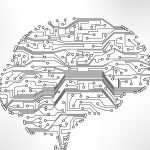Complex Chronic Illness: Retraining the System with Mind-Body Medicine
Tolle Totum
Lauren Tessier, ND
Naturopathic physicians are taught to treat the whole person and find the underlying cause of illness. In times of quick appointments, mountains of paperwork, and insurance mandates, we rarely have the time to have more than a “bare bones” discussion with clients. Despite trying one’s best, such constraints may result in a near inability to discuss with our clients some of the more profound topics regarding health. The topic of Mind-Body Medicine (MBM) is one such topic.
In holding a bachelor’s degree in Health Psychology, I feel comfortable admitting that the field of MBM is overwhelmingly large and, at times, meandering. The subject itself encompasses numerous fields of thought, research, and application. Its history extends back to the spiritual practices of the East, and likely beyond, and progresses forward into the scientifically supported present-day practices. MBM is a welcomed topic by some, while for others it stops at the concept of placebo and conversion disorders. As a result, there is a mixed receptivity to MBM, and therefore associated discussions must be navigated cautiously, as there is an unfortunate stigma associated with certain elements of the topic.
The Stigma
Many Chronic Complex Illness clients, including those suffering from mold illness, share a similar story of seeking care from a physician they once trusted, only to abruptly be prescribed an antidepressant for their suffering. These interactions are unfortunate, as these patient are not getting the care they need, and they may feel disbelieved, cast aside, or unheard. While much research has demonstrated a connection between serotonin and pain perception,1 a prescription for an SSRI that is not accompanied by a clear and thoughtful discussion of the rationale for it, says to the patient “It’s all in your head.” Unfortunately, “It’s all in your head” and MBM are often unnecessarily intertwined, thereby creating a negative perception regarding anything that has to do with the leveraging of the power of mind (and the physiology of the brain) for health purposes.
This stigma is unfortunately longstanding, having its roots in the psychoanalytic movement as brought forth by Sigmund Freud, whose name is nearly synonymous with the theory of hysteria.2 Over time, the controversial diagnosis of hysteria eventually morphed into the concept of psychosomatic illness. Prior to the psychoanalytic sullying of this term, it had simply referred to the connection between the illnesses of the mind and the body.3
One should be cautious and not confuse the field of psychoanalysis with the field of psychology. They are 2 wholly distinct worlds, the former wrought with much consternation due to the controversial Freudian concepts of penis envy, the Oedipus complex, dream analysis, and the psychosexual stages of childhood. These contentious concepts became synonymous with psychosomatic illness, which unfortunately was further damaged by Victor von Weizsacker, a Nazi-sympathizing German physician who posited that psychosomatic illness was a patient’s means to achieving a desired end.3 As time moved forward, the notion of psychosomatic illness was adopted by numerous religious groups that were often met with skepticism and consternation in the public eye. The term, originally an innocent concept from the 1800s,3 now bore the burden of others’ actions and beliefs. In understanding the term’s tumultuous history, one can understand the charge that comes with using it in a clinical context. The phrase “psychosomatic illness” has now been equated with a 4-letter derogatory word, with perceived insulting inferences of blame, lack of self-control, disgust, pity, apathy… the list goes on. And the most unfortunate part is that the broad field of MBM if often impacted by these negative perceptions.
Complex Chronic Illness as Trauma
Complex Chronic Illness patients have usually hit a point in their life wherein they feel as though they have tried everything; and likely, they nearly have. It is at this point that they are willing to step beyond the commonplace approaches to recovery. If framed correctly, timed appropriately, placed in context and discussed empathetically, one may be surprised at the receptivity towards the topic. The discussion of the mind-body connection to Complex Chronic Illness is better understood and accepted when it is framed from the perspective of trauma. Many clients with a longstanding illness inherently understand the traumatic nature of their disease. Grief associated with loss of health, daily battles with feeling ill, chronic toxic exposures, strains on social relationships, and medically induced financial stressors can be traumatic in nature.
Because such traumas are often not a 1-time occurrence, the nervous system adapts to these recurring traumatic insults. In so doing, the body finds a new homeostasis amid the chaos, as a means for survival. For example, someone with a mold sensitivity, unintentionally exposed to a slightly moldy space, may enter a fight-or-flight state. The nervous system becomes activated, and the systems of the body respond appropriately, at least at first. Originally, this reaction was a well-designed evolutionary defensive measure meant to keep someone with mold sensitivity out of exposure. However, with enough exposure repetition, the nervous system comes to understand this reaction as commonplace, and as a result the system never settles. This continued state of systemic hypervigilance is not healthy in and of itself, and its detrimental effect is compounded by the potential for the body to perceive more things as unnecessarily threatening. The goal of using an MBM approach is to help settle the system, and then retrain the system to not enter the fight-or-flight state as reflexively. Having a dialogue about the physiology of trauma helps to remove the client’s potentially perceived stigma around the mind-body connection. However, simply discussing the implications of trauma is not enough; providers must have a general awareness of some of the MBM approaches that exist. It is important to be able to suggest a few different options, as not every approach is going to work for every client. The following is a brief discussion of some of the more popular MBM approaches currently available.
Mind-Body Medicine Approaches
Dynamic Neural Retraining System
Currently, the “Dynamic Neural Retraining System,” or DNRS, is quite popular, as it is often suggested by many physicians specializing in Complex Chronic Illness. DNRS is a user-driven neuroplasticity program, which requires daily hour-long practices employing visualization, movement, and meditation. The cornerstone of the practice centers on visualizing one’s self as healthy, which is based on the theory that the mind seems to process imagined events in a similar manner to experienced events. This suggestion is supported by numerous pieces of research 4-9 wherein visualization has proven impactful on the tangible physiology of the human system. DNRS training occurs via live seminars or by instructional videos, with supplemental support offered by certified coaches following the trainings. As DNRS is widely suggested, it is often one the first MBM programs sought by those with Complex Chronic Illness. As a result, there is a plethora of positive recovery stories arising from its use.
Somatic Experiencing
Another approach that is helpful for some clients is “Somatic Experiencing,” created by Peter Levine. This approach honors the impact of trauma and its ability to trap the body somewhere in the fight-or-flight arousal pathway. In this approach, trauma may be defined either as chronic, ongoing stress (such as that associated with chronic illness) or as a 1-time traumatic experience. Somatic Experiencing focuses on liberating people from these fixed arousal states by means of completing the fight-or-flight experience.10 As an example, wild animals, when chased by a predator, rarely suffer illness resulting from the trauma of being attacked. They are frightened (initiation of stress), flee (elevation of stress), and upon finding safety, can shake, shiver, quiver, and allow their nervous system to come to rest (decline of stress), so that they may move on in an uncharged state (baseline). In today’s world, where we don’t have time to seek cover and “come down” from our stressful experience, we are forced to instead carry with us what is referred to as “thwarted survival energy.” By allowing the body to experience and engage in the motor responses elicited by sympathetically charged states, the waxing and waning of the arousal state can be fully expressed, thus allowing the stressed system to return to the restful parasympathetic baseline. While Somatic Experiencing does not require the person to directly re-experience the trauma, it may brush up against some sensitive experiences. Therefore, it is suggested that this work be completed in part with a licensed mental health professional. Thankfully, there are many practitioners worldwide who specialize in Somatic Experiencing.
Tension Myosotis Syndrome Therapy
The theory of Tension Myosotis Syndrome (TMS) has been helpful to some clients who have not resonated with other approaches. TMS, as described by Dr John Sarno, suggests that physical pain (as well as other disorders including headaches, neurological complaints, dermatological complaints, and gastrointestinal illness), may be due in part to the repression of deep-seated emotions, often centered around trauma. Rather than engaging the legitimate yet intangible pain of emotions, the body presents with physical and tangible symptoms. It is reasoned that this unconsciously occurs to distract from the emotional pain and to unconsciously provide an objectively rational source for the suffering.
The core practice of TMS therapy focuses on addressing emotions, experiences, personality traits, core beliefs, fears, and stressors that may be causing difficulties for the patient. This may be done in part by personal reflection through writing and therapy. Another practice integral to TMS therapy is a return to normalcy – moving through life as if one were already well. Such practice also includes termination of physical treatments used to address the pain (or chief complaint). The logic therein is that continued treatment offers the body feedback that the person is still ill, thereby maintaining the illness pattern. In non-pain populations, this may equate to the discontinuation of supplements or adjunctive care. (Please use your clinical common sense when considering a discontinuation of treatment; a maintenance medication, such as that required in the treatment of clotting disorders, hypertension, or HIV, should not be discontinued.) A longitudinal study of TMS therapy demonstrated efficacy in those suffering from idiopathic chronic back pain.11 Although TMS therapy is a pain-centered MBM approach, it may be applicable to some cases of Complex Chronic Illness, especially where other approaches may not have resonated with the client.
Polyvagal Theory
Another approach that is helpful in some cases is the application of the Polyvagal Theory,12 as developed by Steven Porges in the early 1990s. The Polyvagal Theory centers around the activation of the different branches of the vagus nerve in response to our environment. According to Porges, the autonomic nervous system is better represented when divided into 3 subdivisions. The first subdivision, which is the most ancient of them all, is responsible for immobilization. The second subdivision, synonymous with the sympathetic branch of the nervous system, controls the mobilization response. The third is the social connection response, which, from an evolutionary perspective, is the most modern subdivision.
The activation of each one of these subdivisions is dependent on whether the environment is perceived as safe. When a safe environment is perceived, the social subdivision is activated. As a result, the ventral vagus nerve is engaged, which allows us to mediate social interactions through modifications of facial expression, vocal tone, oxytocin, and even our ability to hear mid-range frequencies like that of the human voice.12 When the environment (which may be internal or external) is perceived as unsafe, either the mobilization response or immobilization response is activated. While the mobilization response is mediated by the sympathetic branch of the nervous system, the immobilization response is mediated by the dorsal vagus nerve of the parasympathetic nervous system. The immobilization response can be thought of as the extreme activation of the parasympathetic nervous system, wherein all functions are slowed to such an extreme as to maintain vital reserves.
In order to navigate the daily requirements of life, the body must maintain balance between the various states of vagal nerve activation; this balance is referred to as vagal tone. A system with a low vagal tone experiences stress easily, while a system with a high vagal tone weathers stress with ease. Trauma may trap someone in a mobilization or immobilization state or, in some cases, a mix of both. As nearly all systems of the body are impacted by the autonomic nervous system, the result is an unbalanced physiology, which lays the foundation for disease. Recovery is made possible by an improvement in vagal tone, thus allowing the body to respond appropriately to the environment. Currently, there are numerous books available that address approaches to increasing vagal tone. Moreover, there are many online resources outlining methods that can be employed at home to help improve vagal tone, including deep breathing,13 engaging in positive social interactions,14-16 body work,17-18 exercise,19 vocalizing,20 cold hydrotherapy,21-22 and more.
One Size Does Not Fit All
As mentioned previously, as each approach is different, so is each client. Therefore, it is important to discuss the general approaches as outlined above, and dialogue with the client about what they may be drawn to, understanding that this may change once the patient starts to engage with the various methods. Some points to consider in your discussions are as follows:
- Financial limitations
- Free time
- Physical limitations (eg, sensory deficits, handicap)
- Fatigue and neurocognitive difficulties
- Requirement for professional support
- Preference to work alone
- Trauma reactivation
- Lack of social support
- Religious stance (eg, some religions forbid meditation)
It is not unheard of for clients to create an amalgamation of MBM practices once they understand the different approaches; this too has demonstrated good results. It should be noted that this discussion is not all-inclusive and is not a critique or endorsement of any of the approaches. The MBM field is experiencing a reawakening, and with the daily advances in psychoneuroimmunology and neurology, it is an incredible time to be in service to others.
References:
- Onuțu AH, Dîrzu DS, Petrișor C. Serotonin Reuptake Inhibitors and Their Role in Chronic Pain Management. November 5, 2018. Available at: https://www.intechopen.com/books/serotonin/serotonin-reuptake-inhibitors-and-their-role-in-chronic-pain-management. Accessed February 15, 2020.
- Bogousslavsky J, Dieguez S. Sigmund Freud and hysteria: the etiology of psychoanalysis. Front Neurol Neurosci. 2014;35:109-125.
- Mäkinen TM, Mäntysaari M, Pääkkönen T, et al. Autonomic nervous function during whole-body cold exposure before and after cold acclimation. Aviat Space Environ Med. 2008;79(9):875-882.

Lauren Tessier, ND, is a licensed naturopathic physician specializing in mold-related illness. She is a nationally known speaker and is the vice president of the International Society for Environmentally Acquired Illness (ISEAI) – a non-profit dedicated to educating physicians about the diagnosis and treatment of environmentally acquired illness. Dr Tessier’s practice, “Life After Mold,” in Waterbury, VT, draws clients from all around the world who suffer from chronic complex illness as a result of environmental exposure and chronic infections. Dr Tessier’s e-booklet, Mold Prevention: 101, has been widely circulated and its suggestions implemented by many worldwide.










